Positive Health Online
Your Country

Ayurvedic and Herbal Perspectives for Managing the Menopause
listed in ayurveda, originally published in issue 260 - February 2020
The menopause is part of the natural cycle of life and is a time of change experienced by all women to the next phase of life, unlike say period problems or pregnancy. Every woman’s experience is different, but the average age range is between 40-55 and it’s a common reason for women to seek support from a herbal or Ayurvedic practitioner. Ayurveda is the traditional science of well-being that developed in India over 5000 years ago and has now become popular all over the world. Both Ayurveda diet and lifestyle suggestions, along with herbal support can really make a difference as to a woman’s experience of menopause.
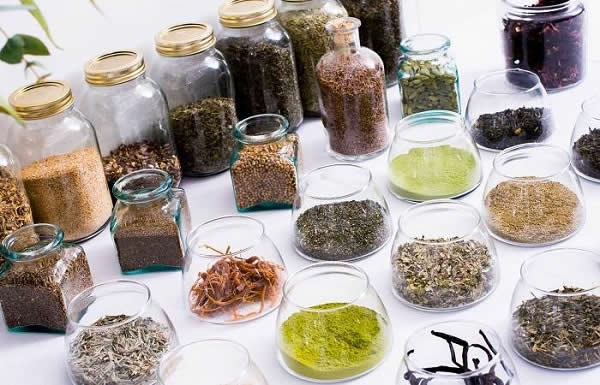
Array of Herbs from Pukka Herbs
When does the Menopause Start?
The menopause occurs when a woman has gone 12 consecutive months without a period. The ovaries essentially shut down and no longer secrete oestrogen and progesterone, key hormones for women’s health. Perimenopause can begin several years before menopause, and usually starts in a woman's 40s, but can start in her 30s or even earlier. The first signs to look out for are any irregularities with the menstrual cycle. Women may notice an unusually shorter or longer cycle, very light or heavy bleeding or skipping a cycle for example. It is normally after this that women start to experience some of the more common symptoms, such as hot flushing and night sweats.
Key Symptoms
Other common symptoms include fluctuations in mood and emotions, urinary urgency, reduced libido, weight gain, joint aches and pains, sleeping problems and vaginal dryness. The exact cause of one of the most irritable symptoms, hot flushes, is not clear but it is thought they are influenced by the hypothalamus, which controls temperature. As oestrogen reduces, it affects the hypothalamus causing it to think a woman is too hot. The reaction is to cool the body, causing blood to be directed towards the skin and sending the sweat glands into overdrive, resulting in a ‘hot flush’. Changes in oestrogen and progesterone levels can be a shock to the body and these symptoms can become debilitating and tiresome for many women. Long-term this can also create fatigue, adrenal strain and frustration.[1]
A woman's dosha (Ayurveda mind/ body type or constitution) may impact the sorts of symptoms she experiences during the menopause. Balancing your main dosha/s through diet, herb and lifestyle changes can help manage these.
- Vata-type menopausal symptoms include mood swings, anxiety, memory loss, insomnia, constipation, reduced bone density, dry skin and mucous membranes (including vagina).
- Pitta-type menopausal symptoms include heavy bleeding during peri- menopause, anger, high blood pressure, excessive irritability, skin rashes and hot flushes.
- Kapha type menopausal symptoms include weight gain, fluid retention, high cholesterol, depression, lethargy and feelings of mental and physical heaviness.
To explore your dosha, have a go at our dosha quiz www.pukkaherbs.com/dosha
Wild about Shatavari Pukka Herbs
https://www.youtube.com/watch?v=rX3ZtrZ3fjg
Lifestyle Tips
From the Ayurvedic perspective, menopause marks the transition into a period of grace and wisdom. For a woman to get the most out of this time, she needs both perspective and preparation. The first step is to support a woman to understand how her body has changed as part of a natural progression. It is helpful to explain to woman that their bodies have been used to a certain level of hormones such as oestrogen, which has been steady since their teens but have now started to drop significantly. I’ve found it really helps for clients to understand this, and make some diet and lifestyle adjustments to support this change. Over time, as the body adjusts these symptoms reduce but are nonetheless distressing.
As a practitioner, one of the primary influencing factors I have noticed on the severity of symptoms of menopause is stress. Almost every case I treat, an increase in symptom severity occurs when the individual is undergoing external stress. So, often I treat with as much emphasis on stress as I do on balancing the hormonal environment. This makes sense in that the stress response is managed by hormones, such as adrenalin and cortisol. A significant change in the hormonal balance of the body will affect the functioning of other primary hormones in a woman’s body and put the body under a level of physical ‘stress’. This is partly because the body’s resources that should be used for making sex hormones such as oestrogen are instead diverted away towards making stress hormones. And to make things worse, a surge of adrenaline caused by stress can directly trigger some of the unpleasant symptoms of perimenopause, such as hot flushes and irritability.
Incorporating daily practices such as yoga, meditation and mindfulness can be helpful. Women could try delegating more at work, or an hour set aside for ‘me time’ every day- every little step could help. The main thing is listening to what the body needs, being in tune with energy levels and making sure not to overdo it. I explain to all my female clients how important it is to just rest during the menstrual cycle, but especially in the perimenopause phase. This will help keep what Ayurveda terms vata dosha in balance and minimise vata related menopause symptoms later on. It is very encouraging to hear pioneering women talking of taking a ‘menopause sabbatical’, taking time to rest and renew so they can carry on enjoying their careers in good health. Looking more generally, sticking to a good daily routine, with meals and bedtime at similar times each day is very helpful in keeping vata dosha balanced.
Ayurveda also recommends daily exercise which is gentle for vata dosha and not overheating for pitta dosha. The benefits of regular physical activity include preventing weight gain, lowering stress levels and improving mood. Aerobic exercise such as swimming, cycling or running is often recommended, as it’s great for heart health and weight management. Walking and relaxing exercise such as yoga or tai chi are great for balancing hormones, too, as they’re brilliant stress-busters. Ayurvedic oil massage can also be helpful in reducing menopause symptoms. I recommend a regular self-massage or professional massage with warm oil to increase circulation, calm vata, and prevent dry skin.
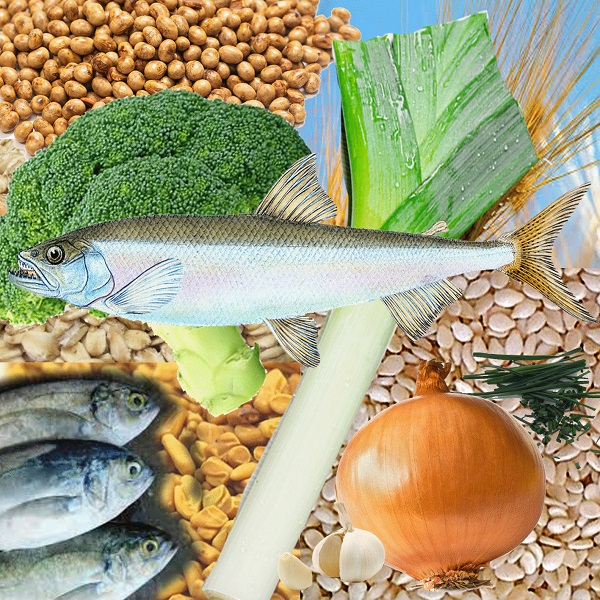
‘Food as Medicine’
Knowing how much emphasis Ayurveda places on ‘food as medicine’ I always discuss diet suggestions with clients. The best way to approach this is to look at foods that will help to balance oestrogen levels.
Foods Rich in Natural Phytoestrogens
These are plant-based oestrogen-like chemicals found in many foods such as soya, tempeh, lentils, linseed, sesame seeds, fenugreek, wholegrains and seeds, such as oats and barley. Where there is excessive oestrogen in the body, phytoestrogens compete with this hormone for receptor sites and prevent some of it from binding. This dilutes the effect of excess oestrogen in the body. Where there is an oestrogen deficiency (as in menopause), they mildly stimulate receptor action and help to increase up-take. There is some controversy over whether phytoestrogens are good or bad for balancing hormones with research studies sometimes contradicting each other. However, understanding the role of phytoestrogens in health is a key part to maintaining proper hormone levels throughout a woman's life. Clear health benefits attributed to a diet rich in phytoestrogens include relief from menopausal symptoms and lowered risk of osteoporosis, heart disease and breast cancer clinical trial shows the benefit of phytoestrogen on bone health in menopause.[2] Phytoestrogens are also safe to take as foods alongside hormone replacement therapies and the contraceptive pill.
Favour Healthy Fats
Explaining to women that hormones such as oestrogen and progesterone are made from fat helps them understand the need for the right kinds of fat in the diet. This is a time when a very low-fat diet may not be helpful. Omega-3 fats such as those in oily fish are key here. As well as being good for the heart and brain, they have anti-inflammatory effects so can help with joint pain and painful periods. Women should aim to eat oily fish (wild-caught salmon, mackerel, sardines, trout or herring) three times a week, or take a good-quality omega-3 fish oil supplement daily. Organic poultry, wild game and 100% grass-fed beef are the best animal fats for healthy hormone function. In wild game it is the content of conjugated linoleic acid (CLA) that is of most benefit. Flax seed oil is the highest plant source of omega 3. Hemp seed oil and avocados are rich in saturated and omega-3 fatty acids and hemp seed oil also displays a high level of omega-6. Olive oil is actually low in omega 3 but high in omega 9. Virgin coconut oil is naturally high in lauric acid. Raw unroasted nuts (other than peanuts) and seeds also contain oestrogen-balancing plant sterols. However, I also advise to avoid using sunflower oil, margarines, and vegetable oil spreads as these could have the opposite effect on hormones.
Focus on Plant Foods
Another key to hormone balance is getting rid of excess hormones floating around your body. Fibre is essential for this, because it binds to ‘used’ hormones in your gut and helps them to be removed efficiently from the body. I advise women to eat plenty of vegetables (five to seven servings a day) along with other whole plant foods: beans, lentils and chickpeas, and easy-to-digest whole grains such as oats and brown rice. Beyond providing fibre, the following vegetables also have specific benefits:
- Cruciferous vegetables: Broccoli (and broccoli sprouts), cauliflower, brussels sprouts and cabbage help metabolise oestrogen. Their sulphur-containing nutrients also enhance liver detoxification processes and destroy cancer cell formation. [3, 4]
- Allium family: Garlic, onions, chives and leeks are rich in sulphur-containing amino acids and the powerful flavone antioxidant, quercetin, that help the liver detoxify and balance oestrogen.
- Chlorophyll: One of the most powerful life-giving substances on the planet, which gives green foods their colour, and are extraordinarily useful in both cleansing and supporting healthy hormones. Pukka’s Clean Greens Superblend is a rich source of chlorophyll, helping to support the liver's cleansing processes.
- All mushrooms: Regulate oestrogen levels. Use reishi,[5] shitake, maitake, button and cep.
A 2018 study looked a how diet influenced the age of menopause and found a high intake of oily fish and fresh legumes were associated with a significantly later onset of natural menopause. Refined pasta and rice was associated with earlier menopause, supporting recommendations such as the above.[6]
Conventional Treatment
Hormone replacement therapy (HRT) is used to relieve symptoms of the menopause, and is used by around 10% of menopausal women. It replaces hormones that are at a lower level as a woman approaches the menopause. HRT has been shown to prevent bone loss and fracture and the current advice from the NHS is that the benefits of HRT are generally believed to outweigh the risks. Research is often conflicting (such as for whether HRT increases the risk of ovarian cancer). However, the links between HRT and breast cancer have long been known, but there was some evidence that only combined oestrogen and progesterone forms of HRT (rather than oestrogen-only) caused cancer, and it was widely assumed that the risk only lasted as long as the treatment. A 2019 study published in the Lancet concludes that all forms of hormone replacement therapy (HRT) make breast cancer more likely, and can do so for 15 years after treatment ends.[7] For this reason, many women are interested in alternative approaches to managing the menopause as a result of safety concerns.
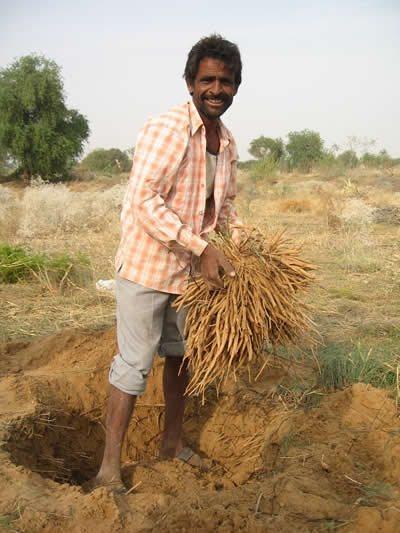
What Herbs can Help?
Shatavari
Traditional herbs can be fantastic for supporting hormone balance in women. One of the very best herbs for supporting hormonal change throughout a woman’s lifecycle is Asparagus racemosus (vernacular name: Shatavari) the Ayurvedic herb shatavari. Its Sanskrit name translates as ‘woman with a hundred husbands’ as this is a renowned ‘women’s’ herb in Ayurveda. It’s known as a tonic for the female reproductive system, helping to bring hormones back into balance, regulate the menstrual cycle (where still present) and reduce perimenopausal symptoms. It also supports bone health after menopause. Shatavari contains steroidal saponins called shatavarins, which have a phyto-oestrogen action (plant oestrogen-like effect) on the body.[8] More research is needed to fully understand the mechanism of action for shatavari, however, it seems to have a hormone-balancing effect similar to other phyto-oestrogen-containing herbs.[9] Pukka’s Herbal research team is looking into pinning down the exact mechanisms with ongoing research projects – watch this space! Shatavari also contains steroidal glycosides which influence a strong anti-inflammatory effect, particularly within the reproductive systems. It is naturally cooling and moistening to the reproductive tract, making it perfect for the hot, dry symptoms of menopause whilst also boosting libido. This plant is also classed as an adaptogen and contains a proportion of immune stimulating constituents making it particularly nutritive and tonifying to a weakened immune system exacerbated by stress. This key herb is included across our Womankind range, including in Womankind tea.
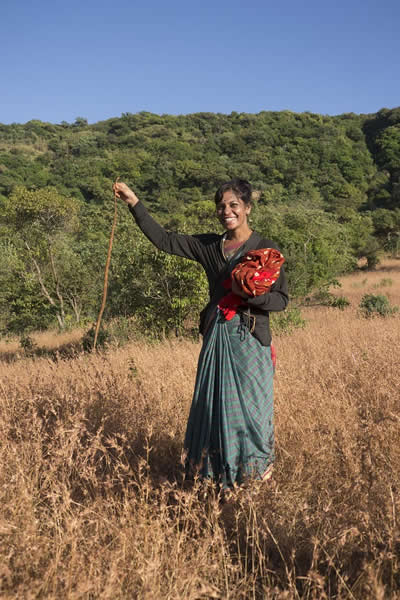
To investigate how helpful shatavari could be for modern women, Pukka Herbs ran an online survey of 95 women going through perimenopause and menopause. After a pre-treatment questionnaire about their symptoms, the women were asked to take two capsules a day of Pukka’s Womankind Menopause, a herbal formula based on shatavari, for three months, then fill in another questionnaire. The women reported an average 45% reduction in hot flushes, a 61% reduction in low mood, feeling tearful and mood swings, and a 57% reduction in vaginal dryness after the three months. And the number of women reporting that their symptoms had a moderate to severe impact on their lives reduced from 87% before the study to just 27% afterwards. I recommend that shatavari is taken for a minimum of three months or three menstrual cycles to allow the benefits to appear.
Ashwagandha
This much-loved Ayurvedic herb is traditionally used for supporting energy while also helping to calm the nerves and lower levels of stress hormones. It is a great example of a class of herb known as adaptogens. They do what they say on the tin and help the body to ‘adapt’ both to the surroundings and cope with both physical and emotional stressors. Traditional herbal medicine uses many adaptogenic herbs for rejuvenation. Often growing on the 'edge' of the world, in jungles, mountains and in extreme climates, these herbs help us 'come back from the edge'. Used properly, they improve the ability to not only tolerate stress, but also increase our immunity, regulate our hormones, enhance our adaptation to mental and physical challenges and make us stronger. The qualities of adaptogenic herbs, especially ashwagandha, are ideal for the approach to and duration of the menopause. I explain ashwagandha offers an anti-dote to the pace of modern life and its particularly helpful in supporting restorative sleep, which in turn helps the body deal with the effects of emotional stress.
It’s also worth considering cooling and calming herbs that will soothe the nervous system as well as the heat. Roses are a wonderful example and can be made into ice teas or refreshing spray’s for the skin. Another key women’s reproductive tonic from Ayurveda is Pukka’s Aloe Vera. This soothing, cooling, moistening and healing, herb enters all body channels acting as a perfect carrier for other healing herbs and to counter the ‘hot’ and ‘dry’ symptoms of menopause. The characteristic essential oils in sage, included in Pukka’s Womankind Menopause supplement, are also supportive in decreasing sweating by strengthening the skin and helping it to retain fluid. The perfect solution for hot sweats. Rosewater also soothes menopausal hot flushes.
Herbal teas containing green tea or licorice are also great at helping balance oestrogen levels for all women. There are many delicious herbal teas incorporating these nourishing herbs. However, these herbs can also be used to make useful women’s decoctions. Herbs such as triphala, shatavari, aloe vera, raspberry leaf, rose and licorice can be boiled with water and cooled to make a cleansing or nourishing decoction. This is used for a vaginal douche. Of all Ayurveda's extensive treatments, this is seen as the single most essential practice for women, from menarche to menopause and beyond.
After menopause, lower levels of oestrogen can impact on bone density, so increasing key minerals to support bone health and incorporating herbs that boost circulation to the muscles, such as turmeric, can be especially helpful.
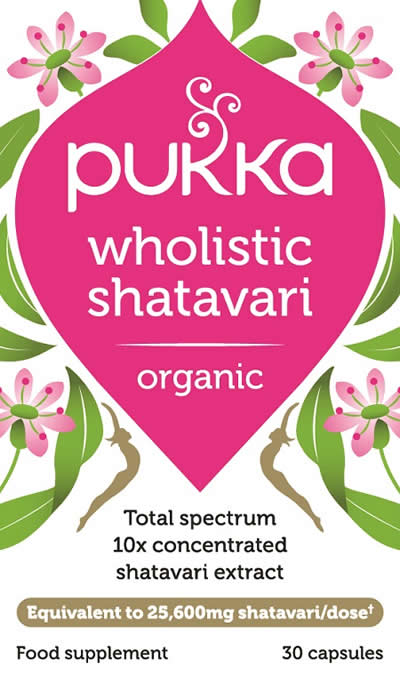
Encouragingly, a clinical study has demonstrated that herbal treatment improved menopausal symptoms, particularly hot flushes and low libido.[10] It suggests that herbal treatment could be considered as a valid treatment choice for women. More research of this type could lead to the recommendation of certain herbal therapeutic approaches by the National Institute of Clinical Excellence (NICE). This could be of great benefit to those who are not helped by currently funded medical approaches to managing the menopause. This study also shows there is a herbal option which GPs could consider when advising women suffering from menopausal symptoms for whom HRT is contraindicated for clinical reasons or by choice.
References
1. Krebs CT and Brown JA. Revolutionary Way of Thinking, From a Near Fatal Accident to a New Science of Healing. Hill of Content Publishing. Melbourne. p40. 1998.
2. Morabito, N., Crisafulli, A., Vergara, C., Gaudio, A., Lasco, A., Frisina, N., D'Anna, R., Corrado, F., Pizzoleo, M.A., Cincotta, M. and Altavilla, D., 2002. Effects of genistein and hormone‐replacement therapy on bone loss in early postmenopausal women: a randomized double‐blind placebo‐controlled study. Journal of Bone and Mineral Research, 17(10), pp.1904-1912.
3. Jiang, X., Liu, Y., Ma, L., Ji, R., Qu, Y., Xin, Y. and Lv, G., 2018. Chemopreventive activity of sulforaphane. Drug design, development and therapy, 12, p.2905. Sep 21 2018.
4. Bernkopf, D.B., Daum, G., Brückner, M. and Behrens, J., 2018. Sulforaphane inhibits growth and blocks Wnt/β-catenin signaling of colorectal cancer cells. Oncotarget, 9(74), p.33982.
5. Loganathan, J., Jiang, J., Smith, A., Jedinak, A., Thyagarajan-Sahu, A., Sandusky, G.E., Nakshatri, H. and Sliva, D., 2014. The mushroom Ganoderma lucidum suppresses breast-to-lung cancer metastasis through the inhibition of pro-invasive genes. International journal of oncology, 44(6), pp.2009-2015.
6. Dunneram, Y., Greenwood, D.C., Burley, V.J. and Cade, J.E., 2018. Dietary intake and age at natural menopause: results from the UK Women’s Cohort Study. J Epidemiol Community Health, pp.jech-2017.
7. Collaborative Group on Hormonal Factors in Breast Cancer, 2019. Type and timing of menopausal hormone therapy and breast cancer risk: individual participant meta-analysis of the worldwide epidemiological evidence. The Lancet.
8. Thakur M, et al. 2012. Characterization and in vitro immunomodulatory screening of fructo-oligosaccharides of Asparagus racemosus Willd. Int J Biol Macromol. 50: 77-81. https://www.ncbi.nlm.nih.gov/pubmed/22001723 2012.
9. Trickey R. 2003. Women, hormones and the menstrual cycle. 2nd Edition. Allen & Unwin: Australia.
10. Green J, Denham A, Ingram J, Hawkey S, Greenwood R. Treatment of menopausal symptoms by qualified herbal practitioners: a prospective, randomized controlled trial. Family Practice, 24(5): 468–474. 14 Aug 2007. Oct 2007. https://doi.org/10.1093/fampra/cmm048 .
Comments:
-
No Article Comments available